

A/B Testing B2B Websites: 11 Powerful Strategies for Success!
Elevate your B2B website performance with A/B testing! Discover actionable insights to captivate your audience and increase conversions.
In the world of B2B digital marketing, staying ahead of the competition requires constant innovation and optimization. A/B testing has emerged as a vital strategy for enhancing website performance, allowing businesses to make data-driven decisions that lead to improved user experiences and higher conversion rates. By comparing two versions of a webpage, marketers can identify what resonates best with their audience, ensuring every element is fine-tuned for maximum impact.
This blog delves into the nuances of A/B testing specifically tailored for B2B websites. From understanding essential metrics to implementing effective strategies, we will explore how A/B testing can be a game-changer for your online presence. Whether you’re a seasoned marketer or just starting, this guide will provide the insights you need to harness the power of A/B testing and drive tangible results for your B2B business.
What is A/B Testing?
A/B testing, also known as split testing, is a powerful method used to compare two versions of a webpage or application against each other to determine which one performs better. This approach is particularly effective for B2B websites, where understanding user behavior and preferences can lead to substantial improvements in conversion rates and overall performance. By creating two variations of a web element—such as a landing page, call-to-action (CTA), or email marketing content—marketers can gain insights into how different designs, texts, or layouts impact user engagement.
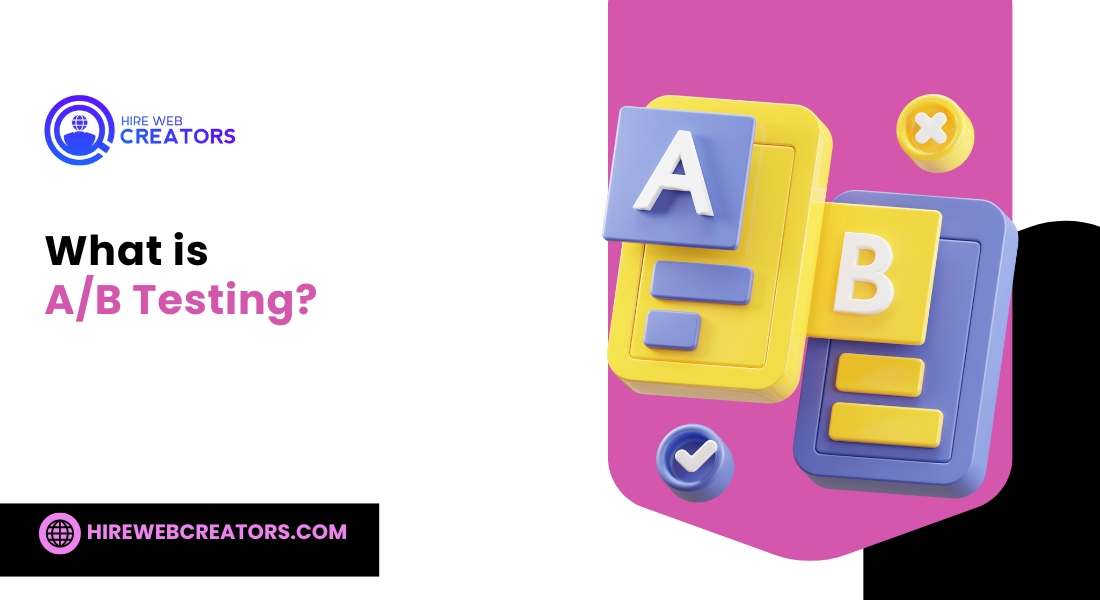
In the context of A/B testing B2B websites, the process typically involves randomly dividing your audience into two groups: one group interacts with version A, while the other engages with version B. This randomization helps eliminate bias, ensuring that the results are a direct reflection of the changes made. As users interact with the website, data is collected on their behavior, which is then analyzed to assess which version performed better based on predefined metrics, such as click-through rates, time on page, or conversion rates.
To effectively implement A/B testing B2B websites, it’s crucial to identify the elements you want to test. Common variables include:
- Headlines: Different wording or styles can drastically change user engagement.
- Images: Visual content can significantly affect how users perceive the site.
- CTA Buttons: Variations in color, text, or placement can influence click rates.
- Form Fields: Simplifying forms may lead to higher completion rates.
Each of these factors plays a significant role in the user experience, making them essential components to consider during the A/B testing of B2B websites. By leveraging the insights gained from A/B testing B2B websites, B2B marketers can make informed decisions that enhance their website’s effectiveness and drive better results. The power of A/B testing B2B websites lies in their ability to provide actionable data that directly informs marketing strategies and optimizations. Ultimately, a well-structured A/B testing B2B websites approach leads to improved user engagement and higher conversion rates, helping businesses achieve their goals.
Why is A/B Testing Important for B2B Websites?
A/B testing is crucial for B2B websites because it provides a data-driven approach to understanding user preferences and behavior. In the B2B sector, where decision-making often involves multiple stakeholders, ensuring that the website effectively addresses diverse needs is vital. A/B testing enables businesses to identify which elements resonate best with their audience, leading to enhanced user experiences and increased conversion rates. By making informed decisions based on real user interactions, B2B companies can optimize their websites to meet the expectations of their target audience.
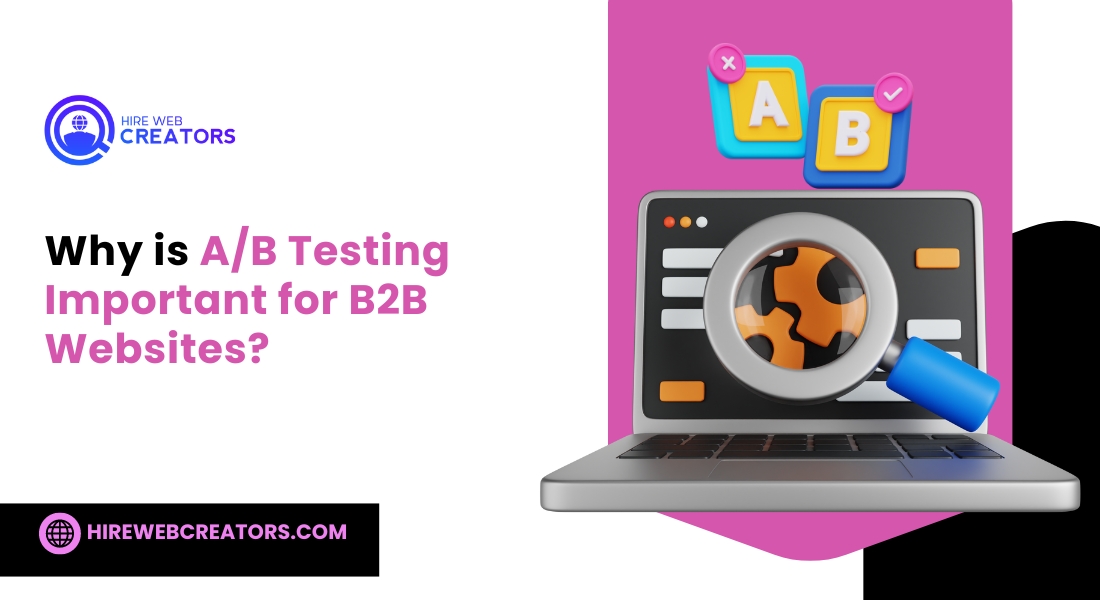
Implementing A/B testing on B2B websites allows marketers to refine their strategies continuously. For instance, testing different headlines, images, or call-to-action buttons can reveal insights about what influences potential clients the most. Understanding these nuances can help businesses tailor their messaging and design to align better with user preferences, ultimately driving more qualified leads. The iterative nature of A/B testing ensures that B2B websites can adapt to changes in user behavior and market trends, maintaining relevance and effectiveness over time.
The competitive landscape in B2B marketing necessitates a focus on measurable results. A/B testing offers the ability to quantify the impact of website changes through metrics such as conversion rates and user engagement. By analyzing these results, B2B businesses can make strategic adjustments that lead to improved performance. This systematic approach not only enhances the website’s effectiveness but also instills confidence in marketing decisions, as every change is backed by data rather than assumptions. As a result, A/B testing becomes an invaluable tool for B2B websites striving for continuous improvement and success.
How Does A/B Testing Work?
A/B testing operates on a straightforward principle: compare two versions of a webpage to determine which performs better based on specific metrics. The process begins by identifying a variable to test, such as a headline, image, or layout, which can significantly impact user engagement. Once the variable is selected, two versions of the webpage are created: the original version (A) and the modified version (B). Both versions are then presented to different segments of the audience simultaneously, allowing for a fair comparison.
During the A/B testing phase, user interactions are monitored and collected. This data includes metrics such as click-through rates, bounce rates, and conversion rates. By analyzing this data, marketers can gain insights into user preferences and behaviors, helping them understand which version resonates more effectively with their audience. In the context of B2B websites, this understanding is essential for optimizing user journeys and driving higher conversion rates.
After the testing period, the results are evaluated to determine which version performed better based on the predefined metrics. If version B shows a statistically significant improvement over version A, it can be implemented as the new standard. Conversely, if no significant difference is found, the original version may remain in place. This iterative process of testing and optimizing helps B2B websites evolve and stay aligned with their audience’s needs, ultimately leading to improved performance and user satisfaction.
What Metrics Should You Measure in A/B Testing?
When conducting A/B testing for B2B websites, selecting the right metrics to measure is critical for understanding the effectiveness of the tested variations. Key performance indicators (KPIs) can provide insights into user engagement, conversion rates, and overall website performance. Common metrics to consider include:
- Conversion Rate: This metric indicates the percentage of visitors who complete a desired action, such as filling out a form or making a purchase. Monitoring conversion rates helps assess the impact of A/B testing on lead generation and sales.
- Click-Through Rate (CTR): Measuring the number of clicks on a specific element, such as a CTA button, compared to the total number of visitors provides insights into user interest and engagement levels. A higher CTR often indicates that the tested variation resonates well with users.
- Bounce Rate: This metric reflects the percentage of visitors who leave the site after viewing only one page. A high bounce rate may suggest that the tested version did not capture user attention effectively, signaling a need for further optimization.
- Time on Page: Understanding how long users spend on a specific page can reveal their level of engagement. A longer time on page may indicate that users find the content valuable and relevant.
Tracking these metrics allows B2B marketers to evaluate the effectiveness of their A/B testing efforts comprehensively. By focusing on relevant KPIs, businesses can make informed decisions that enhance website performance and lead to improved user experiences. A data-driven approach ensures that changes made to the B2B website are grounded in user behavior and preferences, ultimately driving better results.
How to Set Up an A/B Test for Your B2B Website?
Setting up an A/B test for your B2B website requires a strategic approach to ensure meaningful results. The first step is to define clear objectives for the test. Identify what specific outcomes you want to achieve, such as increased conversions or improved engagement rates. By having well-defined goals, you can select the most relevant variables to test and measure their impact effectively.
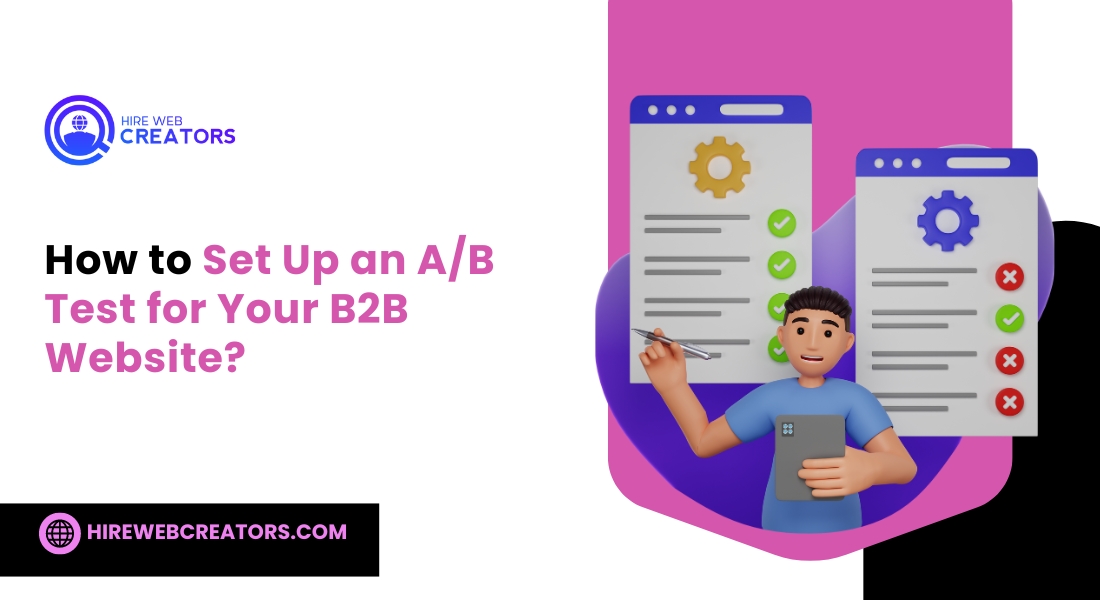
Next, choose the specific element you want to test, such as a headline, CTA button, or layout. Create two versions of the webpage: the original (version A) and the modified version (version B). Ensure that the variations differ only in the element being tested to isolate the effect of that change. This precision is crucial for obtaining reliable results.
Once the versions are created, implement a reliable A/B testing tool to facilitate the process. Many tools offer user-friendly interfaces and robust analytics features, allowing you to monitor user interactions and collect data effortlessly. Ensure that the test runs for a sufficient duration to gather enough data for statistical significance. Typically, running the test for at least a week is advisable, depending on your website traffic.
As users engage with both versions, analyze the collected data based on predefined metrics. Evaluate the performance of each version against your objectives to determine which one is more effective. If version B outperforms version A, consider implementing the changes permanently. By following these steps, B2B businesses can set up A/B tests that yield valuable insights and drive website performance improvements.
What Are Common A/B Testing Strategies for B2B?
Several effective A/B testing strategies can significantly enhance B2B website performance. One common approach is testing different headlines or value propositions. Headlines serve as the first impression for visitors, and optimizing them can lead to improved engagement and conversion rates. Experimenting with varying tones, lengths, and keywords can help identify the most compelling messaging for your audience.
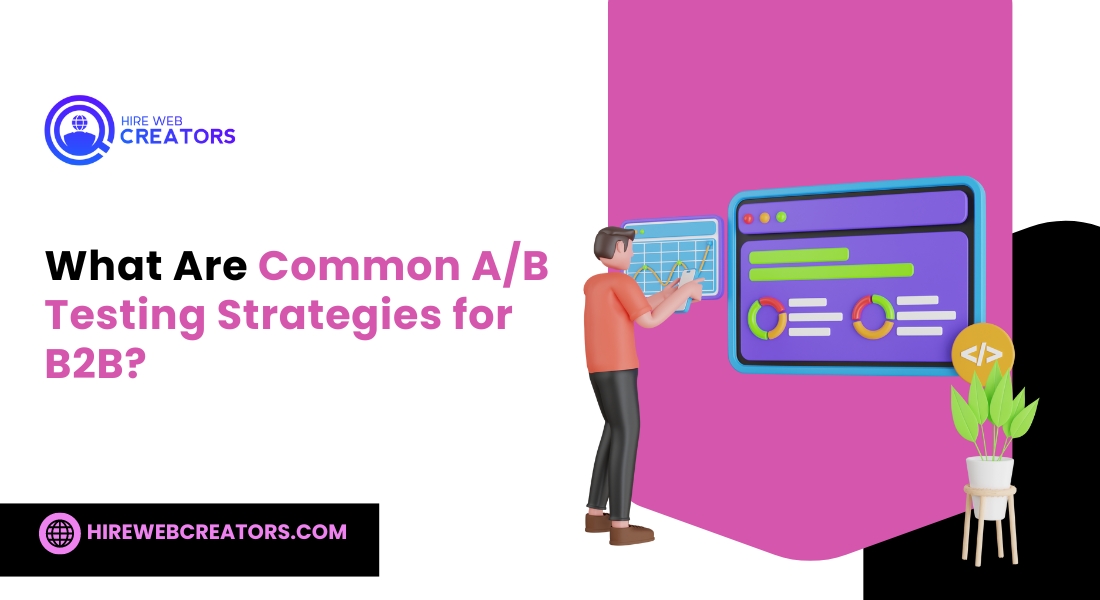
Another strategy involves testing different layouts or designs for key landing pages. A/B testing variations in the placement of images, buttons, or text can reveal how layout impacts user behavior. For B2B websites, a clean and intuitive design is essential for guiding visitors toward desired actions. Testing different design elements can help optimize user experience and reduce friction during the conversion process.
Additionally, businesses can explore A/B testing for forms, such as lead generation forms or contact requests. Variations in the number of fields, field types, or even the language used can affect form completion rates. Streamlining forms by reducing the number of fields or simplifying the language can lead to higher conversion rates. By continuously testing and refining these elements, B2B websites can enhance their lead generation efforts and drive more qualified traffic.
Incorporating these strategies into your A/B testing plan allows B2B marketers to make data-driven decisions that optimize website performance. By focusing on elements that directly impact user engagement and conversions, businesses can continuously improve their online presence and achieve their marketing objectives.
How to Analyze A/B Test Results Effectively?
Effectively analyzing A/B test results is crucial for deriving actionable insights that can improve B2B website performance. After running your A/B test, the first step is to collect and review the data gathered during the testing period. This data includes metrics such as conversion rates, click-through rates, and user engagement statistics for both versions of the webpage. Establishing a clear comparison between the two variations allows you to identify which performed better based on your predefined objectives in the A/B testing B2B websites context.
Statistical significance plays a vital role in the analysis process. It helps determine whether the observed differences in performance between version A and version B are likely due to the changes made or simply random variation. Utilize statistical analysis tools or A/B testing B2B website platforms that provide significance testing to ensure your results are reliable. Typically, a confidence level of 95% is considered acceptable in A/B testing B2B websites, indicating a high likelihood that the observed effect is genuine.
Once statistical significance is established, interpret the results in the context of your business goals. Assess which version of the webpage led to improved performance in terms of user engagement and conversion rates. Use this analysis to guide future optimization efforts, identifying areas for improvement and potential follow-up tests. A/B testing B2B websites is an ongoing process, and continuous learning from your results will help refine your B2B website strategy over time. By effectively analyzing A/B test results, businesses can make informed decisions that drive meaningful improvements and foster growth in their B2B website performance.
What Tools Can Help You with A/B Testing?
Several tools are available to facilitate A/B testing for B2B websites, each offering unique features and capabilities. Utilizing the right A/B testing tool is crucial for ensuring accurate results and streamlining the testing process. One of the most popular tools is Google Optimize, which integrates seamlessly with Google Analytics. This platform allows users to create and run experiments easily, enabling them to test variations of web pages and analyze results within the Google ecosystem.
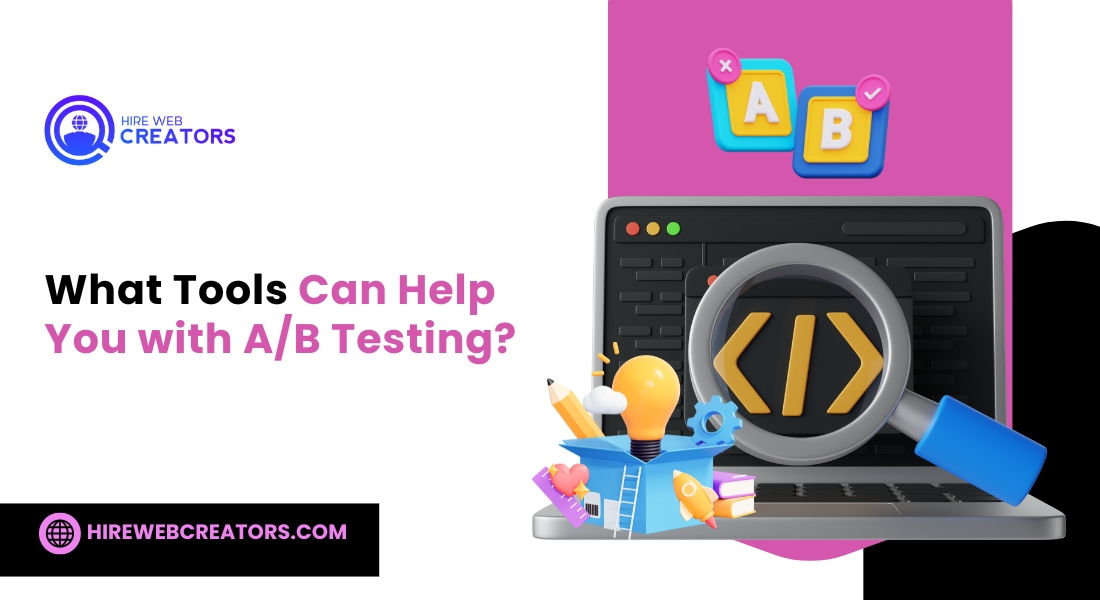
Another highly regarded tool is Optimizely, known for its user-friendly interface and robust features. Optimizely supports various testing types, including A/B testing, multivariate testing, and personalization. It provides detailed analytics and insights, making it easier for B2B marketers to understand user behavior and preferences. The platform’s flexibility allows businesses to implement tests without extensive coding knowledge, making it accessible for marketers at any skill level.
VWO (Visual Website Optimizer) is another effective A/B testing tool that offers a comprehensive suite of features, including heatmaps and user recordings. These additional features allow marketers to gain deeper insights into user interactions on their websites, enhancing the overall testing experience. VWO’s visual editor simplifies the process of creating variations, enabling marketers to experiment with different design elements and content effectively.
Other notable A/B testing tools include Adobe Target and Unbounce, each offering unique advantages for B2B marketers. Adobe Target provides advanced personalization and targeting capabilities, while Unbounce focuses on landing page optimization. By leveraging these tools, B2B websites can implement A/B testing more efficiently and gain valuable insights that drive website performance improvements.
How to Implement Changes Based on A/B Testing?
Once A/B testing B2B websites results are analyzed and a winning variation is identified, implementing changes effectively is essential for maximizing the benefits of the test. The first step is to ensure that the winning version is deployed across your B2B website. This process may involve updating landing pages, adjusting CTAs, or modifying design elements based on the insights gained from the A/B testing B2B websites. Clear communication among team members is crucial during this phase to ensure that everyone is aligned on the changes being made.
It’s also important to monitor the performance of the newly implemented changes after deployment. Tracking key metrics, such as conversion rates and user engagement, will help you assess whether the adjustments are delivering the expected results. If performance improves, it confirms that the A/B testing B2B websites provided valuable insights. However, if the results are not as anticipated, consider conducting follow-up tests to explore alternative variations or investigate other factors affecting user behavior.
Documenting the results and learnings from the A/B testing B2B websites process is vital for future reference. Keeping track of what worked and what didn’t can help inform future testing strategies and contribute to ongoing website optimization efforts. By maintaining a repository of A/B testing B2B website results, B2B marketers can build a knowledge base that guides their decision-making and helps refine their marketing strategies over time. Ultimately, the insights gained from A/B testing B2B websites will enhance overall marketing effectiveness and drive better results for B2B companies.
What Are the Pitfalls to Avoid in A/B Testing?
A/B testing B2B websites can provide invaluable insights, but several pitfalls can hinder the effectiveness of your efforts if not addressed. One common mistake is an insufficient sample size. Conducting A/B testing B2B websites with too few visitors can lead to inconclusive results and unreliable data. To achieve statistically significant outcomes, ensure that your test reaches a sufficient number of users before concluding. A larger sample size increases the likelihood of capturing meaningful user behavior and preferences, making A/B testing B2B websites more effective.
Another pitfall is testing too many variables simultaneously, which can complicate the analysis process. For A/B testing B2B websites, it’s essential to focus on one element at a time during each test. This approach allows for a clear understanding of how changes affect user engagement and conversion rates. Testing multiple variables at once can lead to ambiguous results and make it challenging to determine the specific impact of each change on A/B testing B2B websites.
Failing to define clear objectives can also undermine A/B testing B2B website efforts. Establish specific goals for what you hope to achieve with each test, such as increasing conversion rates or improving user engagement. Without well-defined objectives, it becomes difficult to measure success and evaluate the effectiveness of the tested variations. By avoiding these common pitfalls, B2B marketers can conduct more effective A/B testing of B2B websites that drive meaningful improvements and optimize website performance.
4o mini
How Can A/B Testing Enhance User Experience?
A/B testing B2B websites plays a significant role in enhancing user experience by allowing marketers to make data-driven decisions that cater to user preferences. By testing different elements, such as layout, color schemes, and content, businesses can identify which variations resonate best with their target audience. Understanding user behavior through A/B testing B2B websites enables companies to create more intuitive and engaging experiences, ultimately leading to higher satisfaction levels.
One of the key benefits of A/B testing B2B websites is the ability to refine messaging and value propositions. For B2B websites, communicating the benefits of products or services is essential for capturing user interest. Testing different headlines, subheadings, and call-to-action phrasing allows marketers to determine which messaging strategies are most effective. By aligning content with user expectations, businesses can foster a more positive user experience through A/B testing B2B websites.
Additionally, A/B testing B2B websites can optimize website navigation and layout. By experimenting with different menu structures, page designs, and content placements, B2B marketers can create a seamless user journey. A well-structured website makes it easier for users to find the information they need, enhancing overall usability. By continuously iterating on design elements through A/B testing B2B websites, companies can create a more enjoyable and efficient experience for their visitors, leading to increased engagement and higher conversion rates.
What Are Real-World Examples of Successful A/B Testing in B2B?
Real-world examples of successful A/B testing can provide valuable insights into the practical application of this strategy in B2B marketing. Many companies have leveraged A/B testing to enhance website performance and drive better results. For instance, HubSpot famously tested the wording of their calls to action. By changing the CTA from “Get Started Free” to “Start My Free Trial,” they observed a significant increase in conversion rates. This simple change in wording demonstrated how minor adjustments can lead to substantial improvements in user engagement.
Another example is Crazy Egg, a company that provides heat mapping tools. They conducted A/B tests on their homepage design to determine which elements contributed to better user experience and conversion. By testing different layouts, they discovered that a more simplified version of their homepage led to higher engagement and increased sign-ups. This case underscores the importance of continuously testing and refining website elements to optimize user journeys in the B2B space.
Additionally, Mailchimp utilized A/B testing to experiment with various email subject lines. They found that subject lines with a more personalized touch significantly improved open rates compared to generic ones. This illustrates how A/B testing can extend beyond website optimization to enhance email marketing strategies, leading to better overall performance in B2B communications. These real-world examples highlight the effectiveness of A/B testing in driving positive results and improving user experiences across diverse B2B applications.
How to Foster a Culture of A/B Testing in Your Organization?
Fostering a culture of A/B testing B2B websites within an organization is essential for maximizing the benefits of data-driven decision-making. To create this culture, leadership must prioritize experimentation and make it an integral part of the business strategy. Encourage teams across departments to adopt A/B testing B2B websites as a standard practice when making changes to websites, marketing campaigns, or product offerings. By emphasizing the importance of data-driven insights, organizations can instill a mindset that values continuous improvement through A/B testing B2B websites.
Training and resources play a crucial role in supporting a culture of A/B testing B2B websites. Providing team members with access to A/B testing B2B website tools, training sessions, and educational materials can empower them to conduct tests effectively. This investment in knowledge helps demystify the A/B testing B2B websites process and equips employees with the skills needed to analyze results and implement changes confidently. Additionally, recognizing and celebrating successful A/B testing B2B website initiatives within the organization can motivate teams to engage in further experimentation.
Communication is vital for sustaining a culture of A/B testing B2B websites. Establish channels for sharing results, insights, and best practices across the organization. This collaboration ensures that teams learn from one another and leverage successful strategies in their A/B testing B2B website efforts. Regularly scheduled meetings or updates focused on A/B testing B2B website outcomes can reinforce its importance and inspire ongoing experimentation. By cultivating an environment that embraces A/B testing B2B websites, organizations can enhance their ability to optimize B2B websites and drive meaningful results.
What Are the Future Trends in A/B Testing for B2B?
The future of A/B testing in B2B marketing is poised for innovation and advancement as businesses increasingly embrace data-driven decision-making. One notable trend is the integration of artificial intelligence (AI) and machine learning into A/B testing processes. AI-powered tools can analyze vast amounts of user data to identify patterns and predict which variations are likely to perform best. This capability allows B2B marketers to streamline their testing efforts and make more informed decisions quickly.
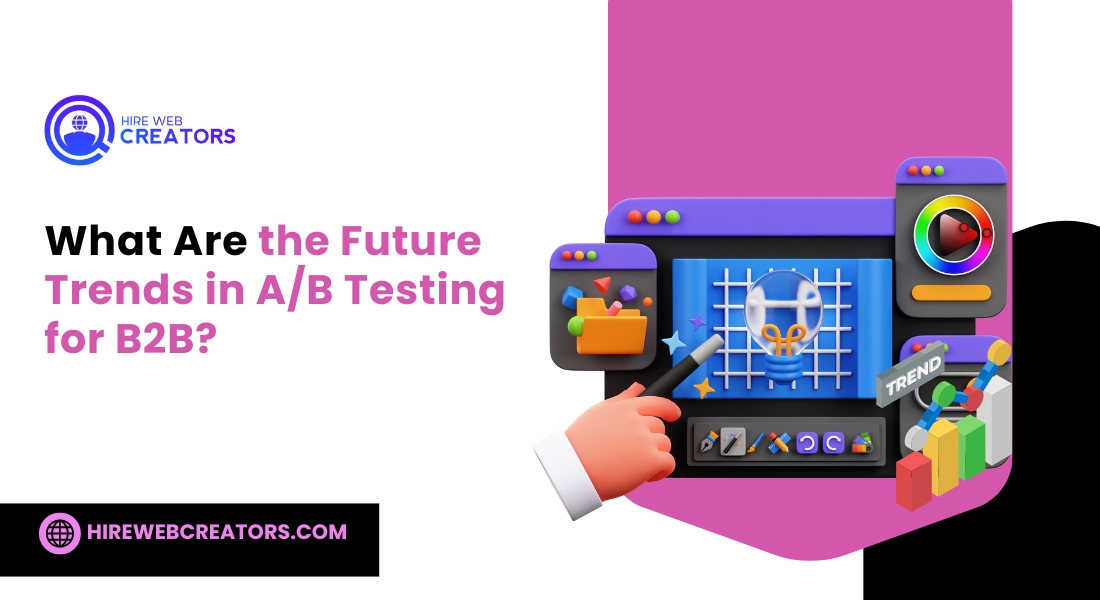
Another emerging trend is the rise of personalization in A/B testing B2B websites. As B2B companies recognize the importance of tailoring experiences to individual users, A/B testing B2B websites will increasingly focus on personalized content and design variations. Testing elements such as personalized messaging, targeted offers, and dynamic content can enhance user engagement and drive higher conversion rates. The ability to deliver customized experiences through A/B testing B2B websites will become a key differentiator for B2B websites in the competitive landscape.
The adoption of multivariate testing is expected to grow in popularity. While traditional A/B testing B2B websites compares two variations, multivariate testing evaluates multiple variables simultaneously. This approach allows B2B marketers to explore various combinations of design elements, messaging, and layouts to identify the most effective overall experience. As tools for A/B testing B2B websites become more accessible and user-friendly, B2B organizations will increasingly leverage this strategy to optimize their websites and campaigns more effectively. Ultimately, the integration of A/B testing B2B websites into marketing strategies will help organizations stay competitive in an evolving digital landscape.
How to Balance A/B Testing with Other Marketing Strategies?
Balancing A/B testing B2B websites with other marketing strategies is essential for creating a comprehensive approach to optimizing B2B websites. While A/B testing B2B websites offers valuable insights, it should complement broader marketing efforts rather than operate in isolation. To achieve this balance, start by integrating A/B testing B2B websites into your overall marketing plan. Ensure that A/B testing B2B websites aligns with your business objectives and marketing goals, allowing for a cohesive strategy that leverages insights gained from testing.
Collaboration among teams is critical for maintaining this balance. Encourage communication between marketing, sales, and web development teams to ensure that A/B testing B2B website initiatives are informed by a holistic understanding of customer journeys. By sharing insights and feedback, teams can identify key areas for testing that align with overarching marketing campaigns and enhance user experiences.
Set a structured testing schedule that allows for regular experimentation without overwhelming teams or diverting resources from other critical marketing initiatives. Prioritize high-impact tests that can yield significant insights and results, and allocate time for analysis and implementation of changes. By creating a systematic approach to A/B testing B2B websites, B2B organizations can effectively balance experimentation with ongoing marketing efforts, leading to improved website performance and better overall results.
Integrating A/B testing B2B websites into your marketing strategy is vital for driving growth and achieving optimal outcomes.
In conclusion, A/B testing is a powerful strategy for improving B2B website performance by providing data-driven insights that inform decision-making. By systematically testing variations in design, content, and functionality, businesses can identify what resonates best with their target audience. This iterative process not only enhances user experience but also drives higher conversion rates, ultimately contributing to business growth. As B2B marketers continue to embrace A/B testing, they can refine their strategies and adapt to evolving customer preferences, ensuring their websites remain competitive and effective.
Embracing a culture of A/B testing within organizations can significantly elevate marketing efforts. By fostering an environment that encourages experimentation and values data-driven insights, businesses can empower their teams to make informed decisions that lead to better outcomes. As trends in A/B testing continue to evolve, including the integration of AI and personalization, B2B marketers must stay ahead of the curve to leverage these advancements effectively. In doing so, they can create tailored experiences that engage users and drive success in an increasingly digital landscape.
